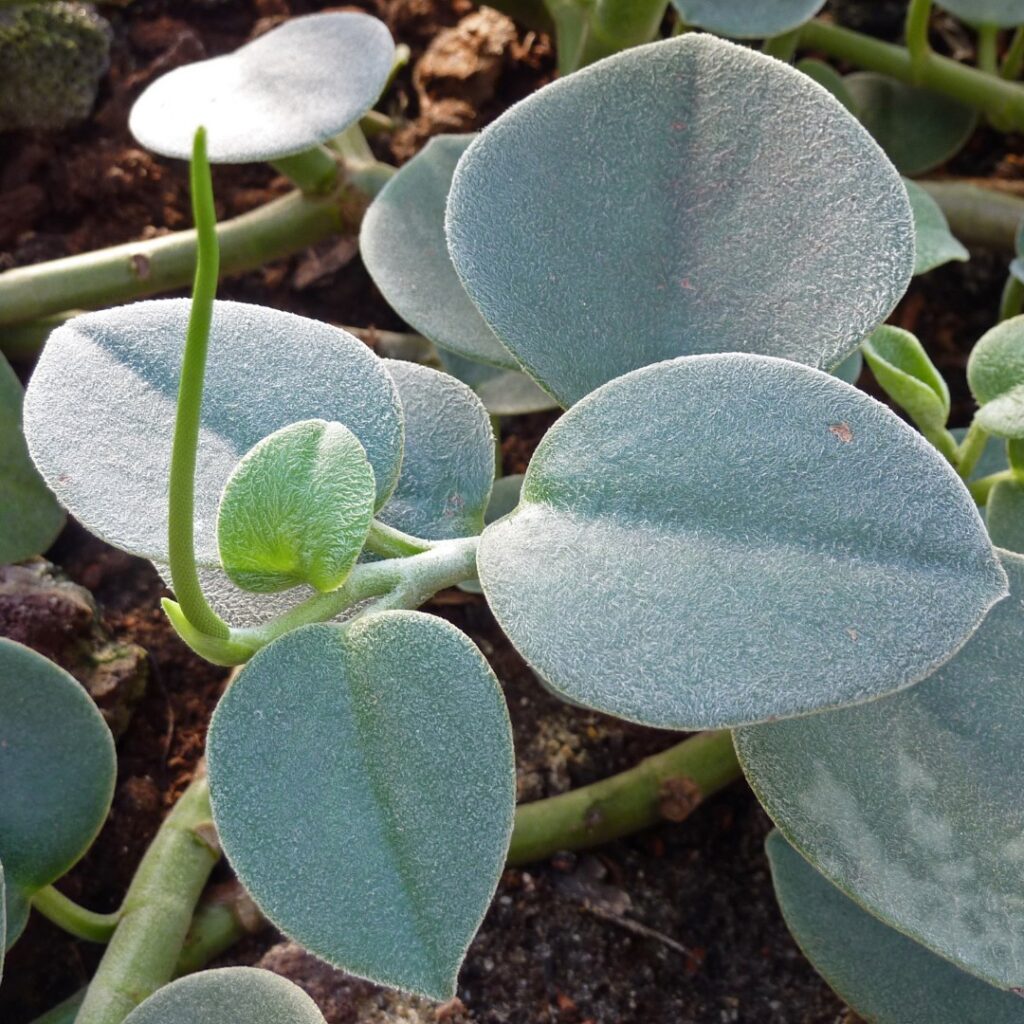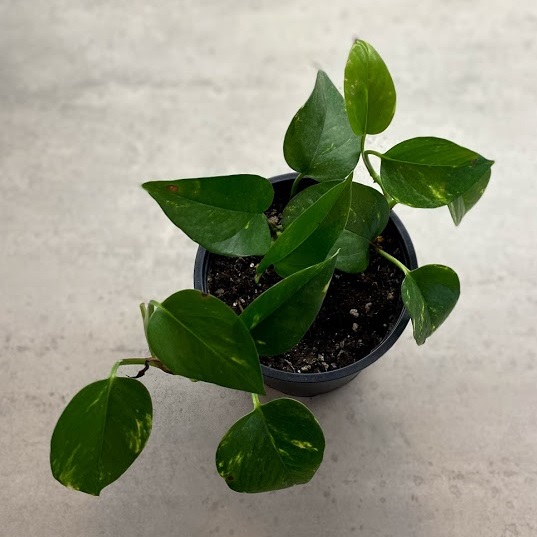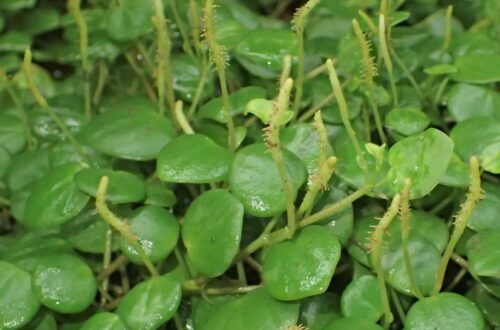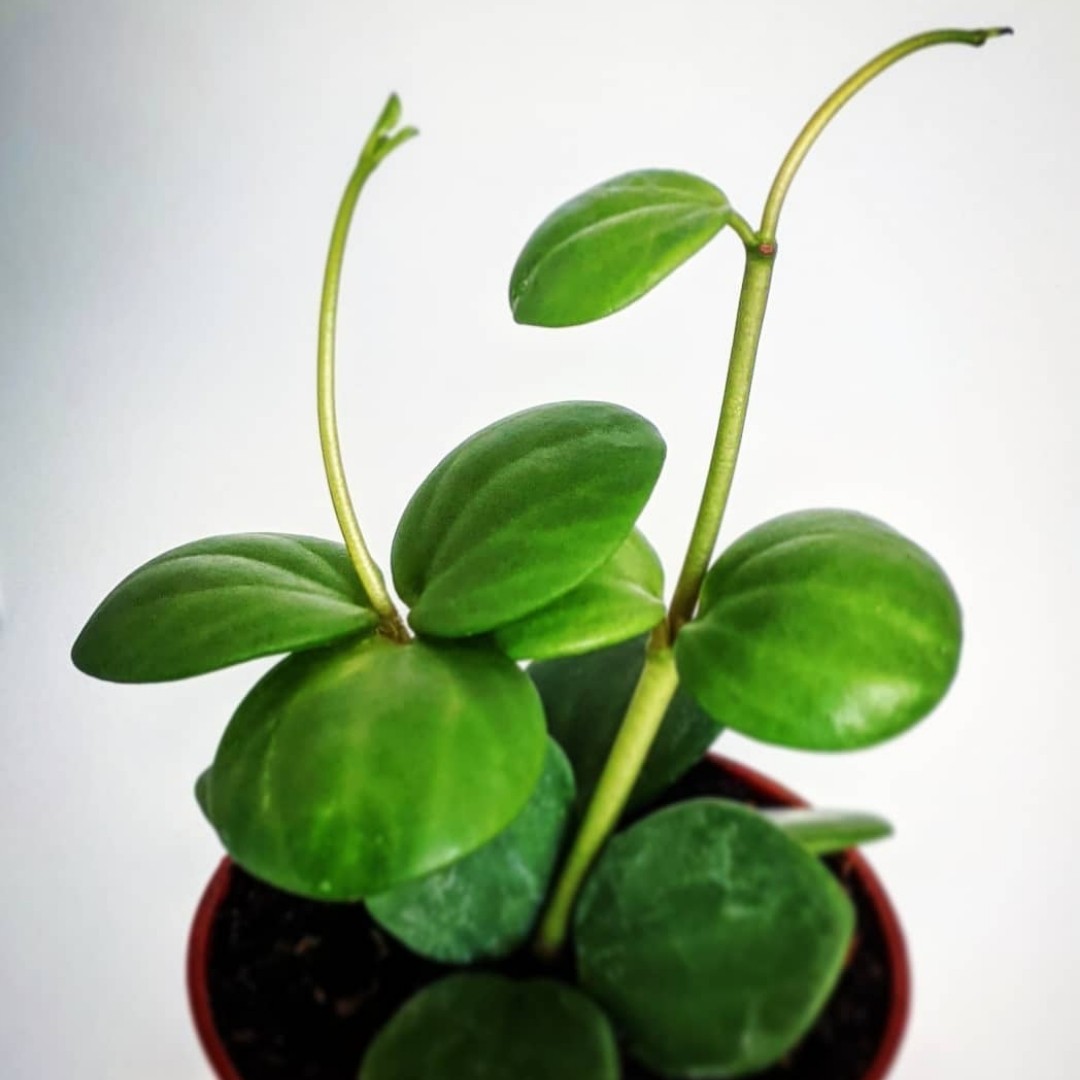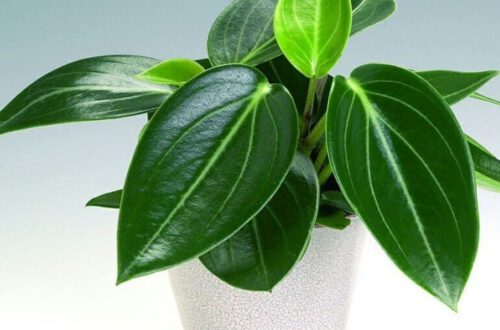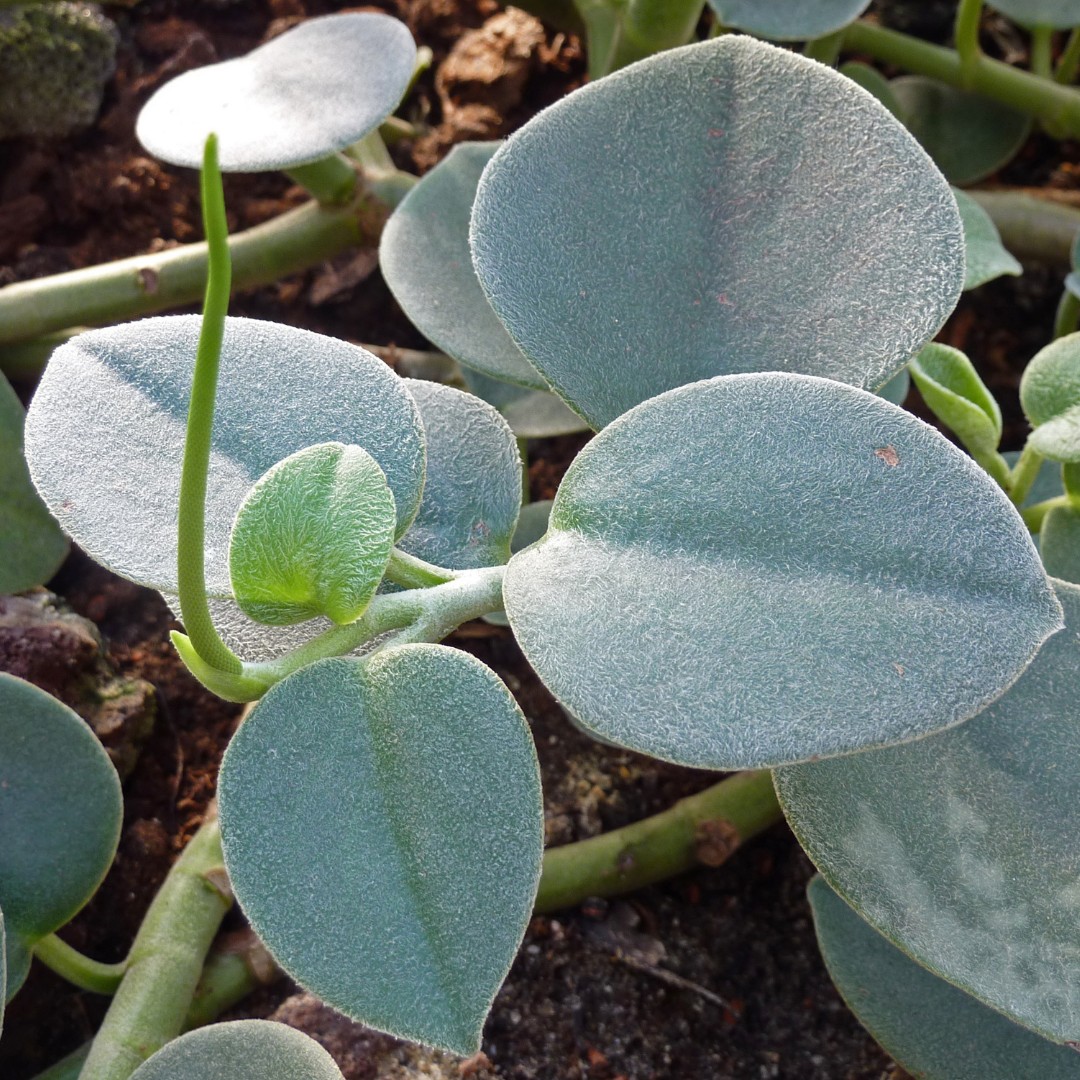
Peperomia Incana
Welcome to our guide to Peperomia Incana care, covering all you need to know about care and propagation. The key to peperomia incana care is to only water it when the soil is dried out, and avoid direct sunlight.
Peperomia Incana Care Summary
| Light needs: | Medium to bright indirect sunlight. |
| Watering needs: | Check soil weekly and only water it if completely dry. |
| Fertilizer: | A well diluted, balanced fertilizer, every 3 weeks in the spring and summer. |
| Soil: | A mix of compost (75%) and perlite (25%). |
| Humidity: | 50%. |
| Temperature: | 18-24°C (65-75°F). |
| Where to buy: | Try our list of Rare Plant Shops. |
| Other names: | Felted peperomia, felt peperomia. |
| Common issues: | Overwatering and pests. |

Introduction
The Peperomia Incana is know for it’s light turquoise, felt-textured leaves, it is stunningly beautiful and a really easy to grow houseplant that originates from Brazil and Peru. It has a a very light furry/felty covering to its leaves giving it a fuzzy texture. I love the gnarly growing pattern of it.
See also: Pink Syngonium, Geogenanthus Ciliatus, Rhaphidophora Hayi Care, Peperomia Quadrangularis, Peperomia Ruby Cascade, Peperomia Scandens, Peperomia Serpens, Pink Lady Peperomia.
Light Needs
Give them medium to bright indirect sunlight, but no direct which will most likely burn the leaves. It can get leggy if not given enough light. You want it to keep that gnarly bushy shape, so give it as much bright indirect sunlight you can.
How Often To Water Peperomia Incana
Do not overwater this plant! They are really tolerant of a lot of conditions, but not overwatering. So check the soil weekly and only water it if completely dry all the way down. You’ll find they need much less in the winter, that’s ok, just do not water them if still wet.
Tip: do not overwater this plant, they get root rot very easily. They must not sit in soggy soil so make sure you check the soil before watering and only water it if dry all the way down
Fertilizer
Use a well diluted, balanced fertilizer, every 3 weeks in the spring and summer. Be careful of fertilizer burn and dilute mroe if needed.
Soil
They like a well draining soil as the roots get root rot easily if they are allowed to sit in soggy soil. Use a mix of normal compost with perlite (about a quarter of the mix should be perlite).
When to Repot Peperomia Incana
Move the plant to a bigger pot when the rotos star to get crowded. If you see any roots growing through the bottom, it is time! It is also worth check checking the roots yearly by taking the plant out of it’s pot a little, to make sure it has plenty of space to grow.
Humidity
50% humidity and above is ideal. They do not like dry air and will thrive if given some humidity.
Temperature
18-24°C (65-75°F) is a good daytime temperature, but try to keep them above 5°C (41°F) at night or they can get cold damage.
How to Propagate Peperomia Incana
Take stem cuttings with a couple of leaves and a node, let the wound callous over for a day and then put it in a jar of filtered water to root. Make sure the leaves are not touching the water or them can rot. Keep the jar well lit, warm and humid to encourage rooting. They can start to root quickly, and after a month or so when they have a good sized root system you can pot them up into soil.
You can also take just leaf cuttings like other peperomias, but they can be quite slow to establish.
For more on peperomias see our peperomia category with all our peperomia care guides.
Peperomia Incana USDA Zone
They can grow outside in zones 10 to 11.
Is It Toxic To Cats?
It is non-toxic to cats and dogs.
Flower
They can flower, most often in the summer. They put up small spikes above the plant with small greeny white flowers in them.
Other Names For Peperomia Incana
Felted peperomia, felt peperomia
Where To Buy
Try our list of Rare Plant Shops.
FAQs and Common Problems
Overwatering and pests are common issues, you should check the soil and only water it if completely dry. At the same time as checking the soil each week you can check the plant for pests.
Additional Resources
Buy: we recommend a digital thermometer hygrometer (amazon affiliate link) to measure humidity.
Links:
- More info on the Kew Gardens plant page.
- More info on the RHS plant page.
Other Articles You Might Like
There you have it, here ends our guide to this beautiful plant. You might also like our other articles:
Pink Syngonium, Geogenanthus Ciliatus, Rhaphidophora Hayi Care.
Please follow us on Instagram and Pinterest for regular plant updates and occasional plant giveaways.
